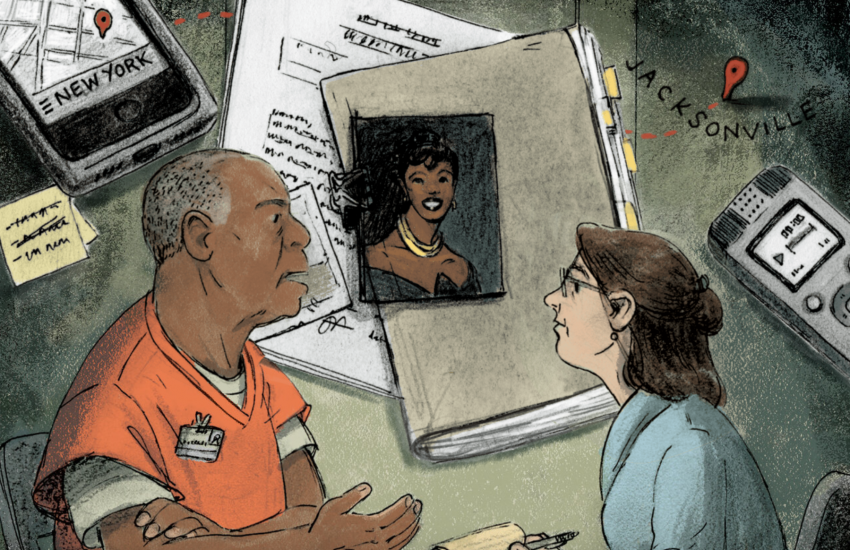How The Boston Globe is using a suite of niche products to cover the booming business of marijuana
Last December, The Boston Globe launched a marijuana section – three months before the first recreational dispensary opened in Massachusetts.
The section wasn’t the Globe’s first foray into the world of weed – tens of thousands of readers already subscribed to the Globe’s free Saturday morning newsletter, “This Week In Weed,” popular for its conversational tone and in-depth coverage of the state’s fast-evolving cannabis market.
The Globe now has a dedicated marijuana team – something no other daily American newspaper is doing.
Dan Adams, the Globe’s first cannabis beat reporter, was a natural fit with seven years of business reporting, including coverage of the alcohol industry. Adams worked closely with the Globe’s Director of New Initiatives, Matt Karolian, to create the marijuana section. Karolian collaborated with the new marijuana section producer, Felicia Gans, to develop additional offerings including @MarijuanaNews (following 420 accounts on Twitter) and a daily subscribers-only newsletter, “The Daily Rip.” Naomi Martin also joined the team as a reporter.
Now General Manager of the marijuana section, Karolian is responsible for the business-side: creating the business case, tracking key performance indicators (KPIs), finding opportunities for partnership and content syndication as well as positioning the offering to advertisers. The section currently has an exclusive advertiser from within the industry.
Karolian sat down with Storybench to share the behind-the-scenes decisions and what the Globe has learned through this process.
How did the Globe decide it wanted to do something special with its cannabis coverage?
Dan Adams had been writing the This Week In Weed newsletter. It was starting to pick up steam with the backdrop of [recreational] legalization becoming a reality in the state. It was off to a rough and rocky start and clearly looked like an area that needed increased coverage. We started to look at [options.] Do we spin this off as its own publication? Do we just keep things the way they are? Or do we do something in-between, like a section? When you launch your own brand, you lose a lot of the momentum from the parent organization, from a branding and public relations standpoint. Because the coverage had been so good and Dan had been garnering so much momentum in the space, that was something we really wanted to retain. But, we thought it required something that was a little bit bigger than just a single reporter or a columnist. We came up with this concept of it being a section that works with the rest of the newsroom but also kind of operates on its own in some ways. Just like we have a sports section with its folks that are dedicated to the beat – that’s what we’re doing with marijuana.
What research did you do in developing this project?
We started to size up the basic size of the opportunity. Which was kind of an interesting exercise, right? It’s hard to figure out. How many people are actually really interested in this? The point where it can actually support a section. We went out and looked at a whole bunch of different trade organizations and their relative sizes. We looked at what they were publishing and based our predictions on some kind of extrapolated math out of that. We boiled it down to, okay, we definitely need basically two full-time reporters and a section producer who also acts as a reporter as well. And so that’s how we put the team together and launched.
Why did you decide to publish a daily newsletter?
Felicia Gans anchors a daily newsletter that’s for subscribers only. We’ve positioned the products in the way that you have Dan’s newsletter, which is free to everyone and comes out on a weekly basis. But, for people who are much more in the industry, there’s almost this Politico-type email newsletter that comes out every day. It’s basically, ‘here’s everything you need to know. If you’re an enthusiast, if you’re an activist, if you’re someone who’s in the business or if you’re someone who’s in the regulatory space – here’s your daily digest of everything that’s happened in that world today.’
How have the newsletters impacted the team’s regular reporting for the website and newspaper?
Obviously, they aide pretty significantly in terms of helping to drive traffic and attention to all of the stories. They’re really kind of a critical component of what the team is doing. The team, for the most part, is really writing for the section. I think 85 percent of all work that goes into the newsletters goes into prep. We’ll be writing stories for the section, and then the daily email probably takes up three or four hours of our producer, Felicia Gans’ time. You’d have to ask Dan as to how much time it takes him to put together the (weekly) email newsletter. I’m guessing it’s probably around six or seven hours in total from start to finish of figuring out what’s going in, writing, editing, sending it out, and doing the analytical follow-up on it. The team works so hard. They’re a really impressive group of individuals and their hearts are really in it to the point where it’s really, really noticeable.
How did the Globe decide to commit to the term ‘marijuana’ instead of ‘cannabis’?
There was a lot of debate early on as to what we’re actually going to call this thing. It really came down to a data analytics decision. There are some folks advocating for cannabis, some folks advocating for weed, some folks advocating for marijuana. We found that overall, what people search for is marijuana. If we want people to be able to find our content – people who are good candidates because they’re out actively seeking it – we needed to use that term. We also want it to normalize the fact that this is just a beat, like any other. Just like you have, globe.com/sports or globe.com/politics, you have globe.com/marijuana.
Besides trade organizations, are there other publications that you look to as leaders in cannabis news?
I don’t think that there’s anyone else doing the kinds of reporting that we’re doing, at the scale that we’re doing and in the really objective way. The Denver Post launched and essentially closed a very similar project (The Cannabist). We learned a lot from them around how we want to roll this out differently. They didn’t charge; it was all ad-supported. There was no digital subscription component and that was not a tenable business.
What have you learned since launching the marijuana section?
Certainly the big takeaway from me is just chiseling off a team that’s highly mission-driven and operating on a goal that isn’t just overall newsroom goals is really an effective way to go about launching new projects. If we were to do this without dedicated resources it would have been a much slower and less impactful rollout. We have a team that all they’re doing is waking up every day thinking about this beat. Not trying to take a business reporter and also have them cover the business of marijuana and have a politics reporter also covering the politics of marijuana makes a significant difference in the ability for that team. They’re subject matter experts at a level that just would not be the case if they were trying to do two or three things at once. It also allows us to maintain a level of being goal-orientated around a business standpoint.
What are you most excited about for the future of the marijuana section?
Continuing to do investigative work is really important and looking at marijuana from a couple of different angles – whether it be social justice or economics. Right now, Massachusetts is the only recreational state in New England – that’s going to continue to change, so watch how rollouts happen in all of the other states. Our region is going to be super interesting to watch. We are going to need to have a watchful eye over those processes because anytime you have something like this there’s the potential for bad actors and crooks, all of those sorts of things and we need to act as that kind of watchdog. From a business standpoint, watching the business overall continue to grow – both our business, but also just the business of marijuana and cannabis is going to be really exciting. We’re very much early days in terms of legalization happening kind of nationwide.





